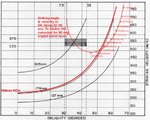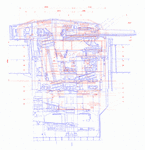renrich
Chief Master Sergeant
I too am enjoying this thread, especially because the main participants seem to be well informed. I don't claim to be well informed at all but I am looking at a 1944-45 Janes and it appears that the main armor belt of the hull of comparably sized BBs with three turrets is shorter than that of the BBs with four turrets. Obviously the main armor belt is trying to protect the magazines below the turrets and since the four turrets cover more horizontal distance than the three the armor belt has to be extended.
Could that be the reason that the BBs with three triple turrets have less total weight in armor than those with four?
Could that be the reason that the BBs with three triple turrets have less total weight in armor than those with four?


